#quincy troupe
Explore tagged Tumblr posts
Text

Quincy Troupe, from “A Mind Apart: Poems of Melancholy, Madness, and Addiction; ‘River Town Packin House Blues’”, edited by Mark S. Bauer.
#Quincy Troupe#A Mind Apart: Poems of Melancholy Madness and Addiction#American Literature#Poetry#Quotes#Literature#Lit#Litblr
81 notes
·
View notes
Text

Quincy Troupe, "River Town Packin House Blues," from A Mind Apart: Poems of Melancholy, Madness, and Addiction
33 notes
·
View notes
Text
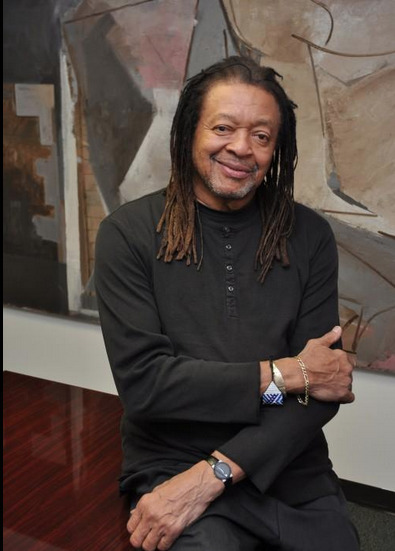
Born July 22, 1939, in St. Louis, Missouri, Quincy Troupe is an awarding-winning author of 12 volumes of poetry, three children��s books, and six non-fiction works. In 2010 Troupe received the American Book Award for Lifetime Literary Achievement.
When, in the fall of 1987, he travelled to the south of France to interview a critically ill James Baldwin, they knew it was his last chance to speak at length about his life and work. The result is one of the most eloquent and revelatory interviews of Baldwin's career, ranging widely over his youth in Harlem, his friendship with Miles Davis and Toni Morrison and his thoughts on race.
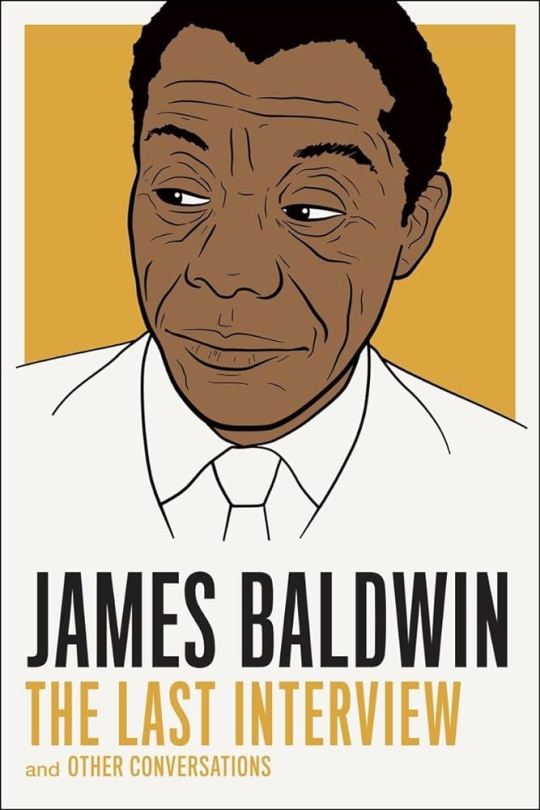
6 notes
·
View notes
Text
"the sound we hear is real when we know it coming from the terrifying mystery of a hip shaman's horn, we see the music form in the shape of the hot tongue of a bic flame lighter tonguing out gushed heat, flames as sounds, as words inside the scorched flow of lava, inside a tongue that is red, white, & blue, laced with dues paid in philadelphia, in hamlet, north carolina, where a language was fractured there,"
Quincy Troupe, Words that build Bridges Toward a New Tongue
2 notes
·
View notes
Text
Listed: Arthur King
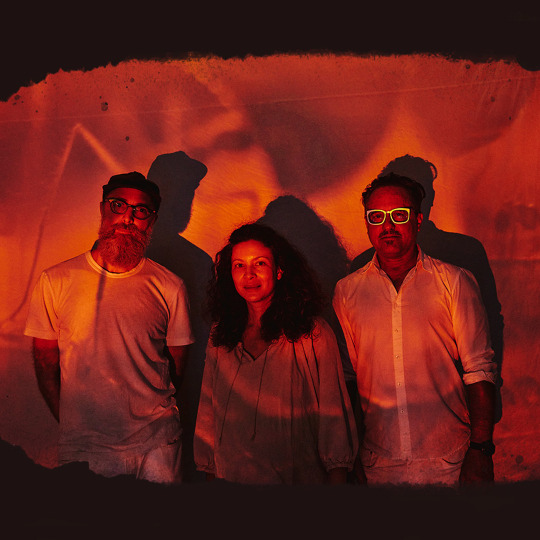
Arthur King is the creative alias of multidisciplinary artist Peter Walker, whose works span film, music, photography, painting, and sculpture. His latest album, Changing Landscapes, centers around a Latin American insect known as the Zompopa, or leaf-cutter ant, building improvised soundscapes over the tropical insect noises. In her review, Jennifer Kelly wrote, “Changing Landscapes (Zompopa) is, indeed, a deeply affecting listening experience, melding the twittering, chittering serenity of the tropical wild with angelic vocals (Mia Doi Todd in particularly lovely form), electronics and other instruments.“ Here Walker lists some books and films that have inspired him.
5 books:
The Spell of the Sensuous (David Abram)
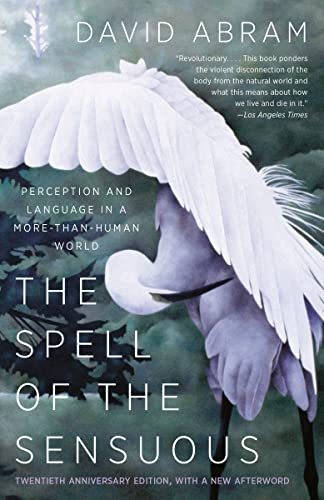
This book is gorgeously insightful. He touches on the tenets of ecopsychology, which posits all things in the natural world as having a soul, the anima mundi. He suggests, as do countless other wise teachers, that all things are connected in an intricate webwork, and that our individual well-being is undoubtedly connected to the well-being of all things.
Pagan Grace (Ginette Paris)
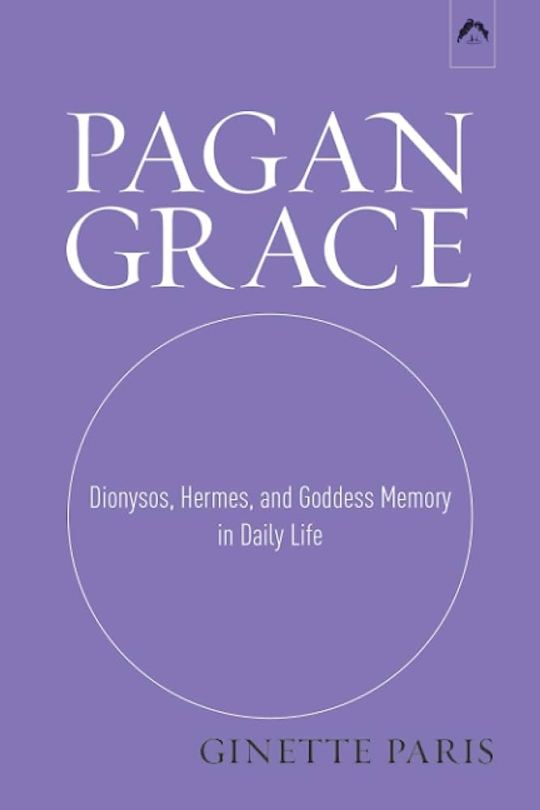
A mythological book with an in-depth psychological perspective. Basically, the gods of old can be seen as representing different parts of the psyche, because they were born from deep human needs that were otherwise unexplainable. Dionysus and Hermes are of particular interest to those dabbling in the creative arts. Paris was also one of my favorite professors in grad school.
Memories, Dreams, Reflections (C.G. Jung)
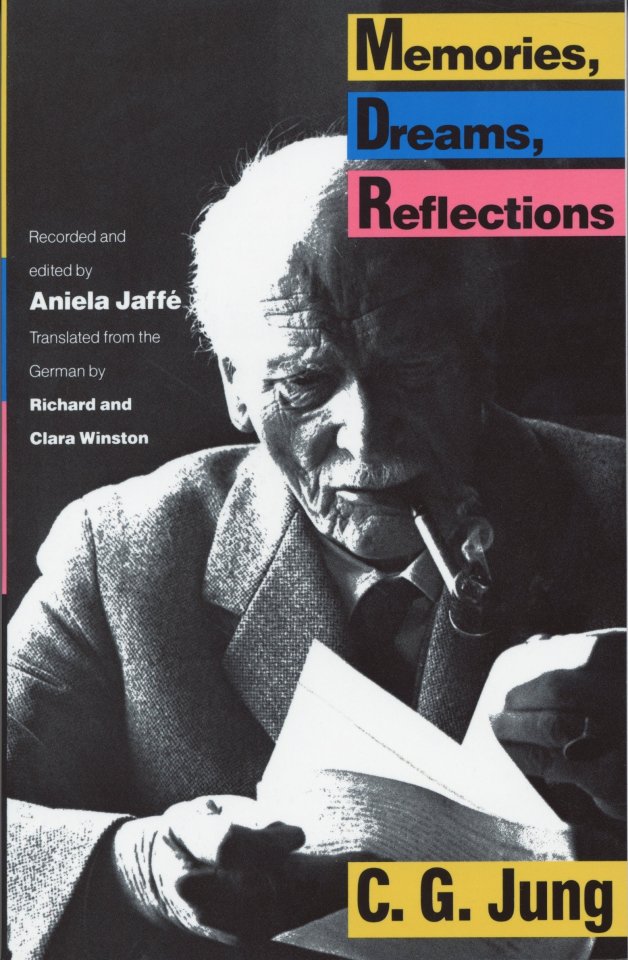
In this insightful memoir, Jung writes about a listening exercise he did in his home, basically active listening, when the sounds he heard, once he became still, filled the air like a natural sort of symphony. With a little attention, the background became the foreground. Brian Eno later elaborated on this concept with his production of (and coining of the phrase) ambient music. Jung also reflects on his intensive engagement with his unconscious when he was middle aged, a process that took him more than a decade and ultimately produced his seminal The Red Book. That period of his life, he says, came to define all that happened before it and all that happened after it. He is an inspiration to dive deep.
Miles: The Autobiography (Miles Davis and Quincy Troupe)
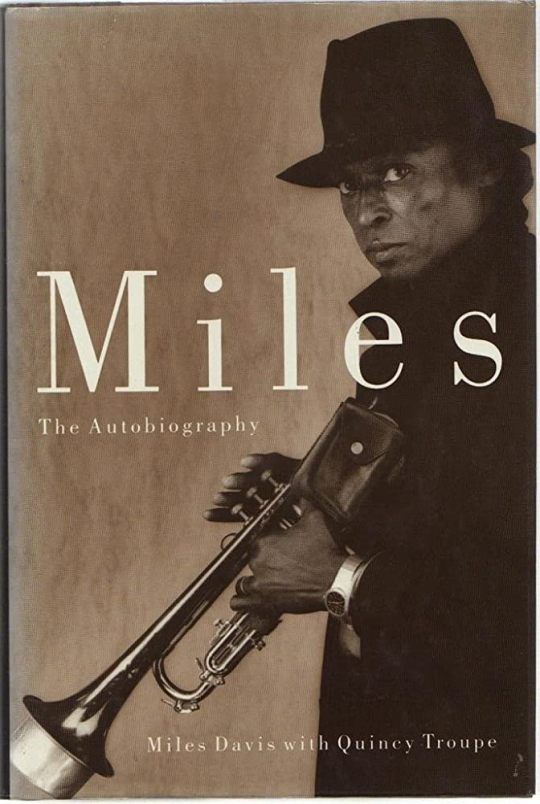
I’ve read more music biographies than I’d probably admit to, but this one is special. Released just a few years before Miles’ death, I read it in my early twenties and remember loving it. What a story he had! I’m still a huge fan, and am looking forward to re-reading this one when I have a nice long break from whatever else it is that I occupy my time with.
Dream and the Underworld (James Hillman)

Hillman is just a force unto himself. The way his brain works is almost too hard to follow sometimes, the way he loves to turn phrases around on themselves to propose another viewpoint. One of my favorite concepts of his relates to the dream world, or the unconscious, and the task of trying to understand its contents. Hillman explains that in order to understand something irrational, we must irrationally understand, or more simply, try to move away from our logical, intellectual processes, and enter a more creative realm.
5 movies:
Three Thousand Years of Longing (d. George Miller)
youtube
I’m a big fan, it turns out, of recent George Miller movies. Mad Max: Fury Road being one of them. This latest film of his is wonderfully mythological, and the editing and sound design is a joy to experience. It’s also refreshing to see Middle Eastern/Muslim mythology at work.
The Red Turtle (d. Michaël Dudok de Wit)
youtube
We (Arthur King) have an ongoing live scoring event called “Unknown Movie Night,” where both the audience and band find out what film we’re scoring the moment it plays. The Red Turtle was the most recent selection, just a few weeks ago now. It’s a beautifully simple animated tale from the stupendous Studio Ghibli, and is both heart wrenching and eye opening. I can say this after watching the film, not listening to it! As far as I know, it has very little dialogue, so we all enjoyed this one, with its newly-minted improvised score, very much.
Children of Men (d. Alfonso Cuarón)
youtube
Another director-to-be-a-fan-of, this is a masterpiece by Cuarón, in my opinion. Easter eggs aplenty in this one — lots of ripe and symbolic imagery about the fall of humans. Maybe we won’t be too far off in the real-world 2027? The story is so rich and the film making is both otherworldly and familiar.
Hereditary(d. Ari Aster)
youtube
I don’t like horror films. I tend to avoid them. But this one is just so well done, it’s perhaps worth being scared out of your gourd for a little while. It’s the kind of psychological thrill ride that goes way beyond the jump scares and into a deeper realm of unfolding realities and supernatural phenomena. Maybe watch this one during the day, with other people around.
Inception (d. Christopher Nolan)
youtube
OK so maybe we’re ending with an easy one, but I needed it after just remembering Hereditary. I love the metaphors in this film associated with the different layers of one’s psyche. As we enter deeper and deeper into the subject’s mind, we find not only more irrationality, but also more barriers of entry. The last stronghold in this case, the deepest nook of the psyche, is pictured as a military-style fort in a secluded frozen land, armed to the nines and just about impossible to penetrate. Sound familiar?
#dusted magazine#listed#arthur king#peter walker#david abram#ginette paris#c.g. jung#miles davis#quincy troupe#james hillman#george miller#michaël dudok de wit#alfonso cuarón#ari aster#christopher nolan
1 note
·
View note
Text
My first mistake was thinking ANY of these men were neurotypical.
#nu carnival#nucani#n:c#nukani#nu: carnival#nu:c#seriously the only one I could think of as neurotypical is Quincy#feel free to prove me wrong on him too#fuck the gemstone clan#this is the tisim troupe
23 notes
·
View notes
Text
❄️ FUYUGUMI "A Song for the Yearning Angel / Yearn for the Angel" SYNOPSIS

Michael, a medical student in college, appears detached from the world and acts aloof. Uriel tells Raphael, who is worried about Michael, that the souls of former angels are aliens to the human world, therefore it is inevitable that he would be shunned. So Raphael descends down to Earth... Michael climbs over the rooftop fence, and Raphael immediately reaches his hand out. It felt as if he had met Raphael long ago.
CAST: Tsumugi Tsukioka - Michael Tasuku Takato - Raphael Hisoka Mikage - Uriel Homare Arisugawa - Metatron Azuma Yukishiro - Fred Guy - Derick
#note 焦がれる mostly means romantic yearning and michael isnt an angel anymore so. raphael ????#IM SO FUCKIGN SCARED#WATH DO YUO MEAN HE TRIES TO OFF HIMSELF MICHAEL W HAT#ALSO AZUMA?????????? FRED???????? WHAT HAPPENED TO PHILIP????????#OK YEAH THEYRE IN A COLLEGE BUT. PHILIP :(#a3#a3 act addict actors#a3 translation#a3 game#fuyugumi#winter troupe#tsumugi tsukioka#tasuku takato#hisoka mikage#homare arisugawa#azuma yukishiro#guy nishiki#a3 guy#>> quincy translates
14 notes
·
View notes
Text
How the Dracula Stage Play Influenced Future Adaptations
So I wanted to let people know about the stage adaptation of Dracula, because it established a lot of tropes that have come to define the novel as well as vampire fiction in general, despite the fact that large changes were made when bringing the book to the stage. Sometimes, honestly, it seems like more adaptations pull from the play than the book. Okay:
The original stage adaptation of Dracula was written in 1897 by Stoker himself! Here you can see the manuscript in his own hand:
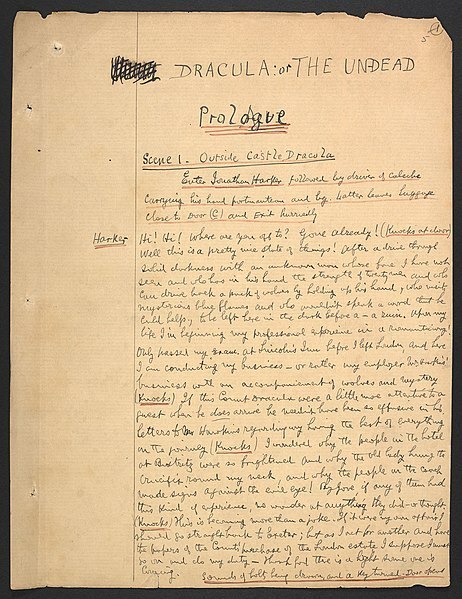
Apparently he hated how it turned out, because he called it “dreadful” and it was performed only once and then never again. The role of Mina was played by Edith Craig, a well-known figure in the suffragist movement and the daughter of Ellen Terry, Stoker's friend, whom he mentions in the book. The next attempt at adapting the novel would not be until the 1920s, after Stoker had died.
The 1924 adaptation by Hamilton Deane stays fairly close to the events of the novel. Some key points:
The entirety of the action takes place in the Harkers' house
Mina and Jonathan are already married
Dracula is already in England, and the storyline involving Jonathan as a prisoner of the Count has been omitted
To accommodate the female members of his theater troupe, Quincy is now a woman! Her name is still Quincy, and she is described as “feisty,” and is a close friend of Jonathan and Mina. (There don’t seem to be any photos from the 1924 play, sadly.)
It is in this first major adaptation that the idea of the Count as suave and debonair is brought into existence. This change is to allow Dracula to interact more easily onstage with the other characters, whereas in the book he stays an offscreen threat for large amounts of time. This is also the first instance of Dracula wearing a high-collared pointy cape, which was originally done to hide the actor better whenever Dracula had to “disappear” through trapdoors.
Here is Raymond Huntley as Dracula in the 1924 stage adaptation:
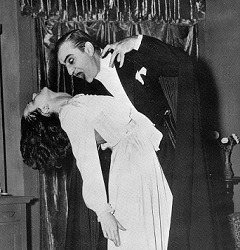
The play was a success, and quickly moved to Broadway:
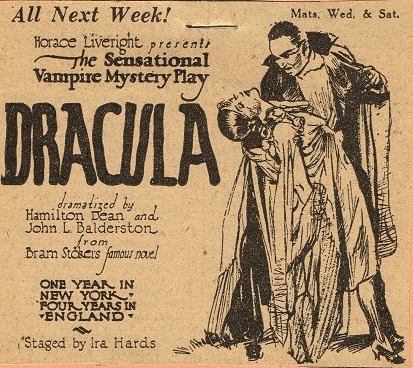
This version, adapted by John Balderston, was a complete revision not just from the book but from the 1924 stage play, and a LOT of changes were made:
Quincy, Arthur, and MINA have been removed from the story. Mina is mentioned as having died mysteriously before the play takes place.
Jonathan’s relationship to Dracula has been completely removed. He is not involved with bringing the Count to England at all. He is also now wealthy, and has traveled Europe extensively, where he has heard folktales about vampires.
Lucy is now engaged to Jonathan, and her last name is now Lucy Seward. This is because……..
John Seward has been aged up and is now Lucy’s father.
The action takes place at Seward’s house/asylum.
Renfield is allowed to just sort of…wander around Seward’s house when the plot requires him to be there. He gets dragged away by attendants whenever he needs to be offstage. He also survives.
The Broadway version also made large changes in characterization:
Lucy is weak and feeble when we meet her in the play. She is helplessly preyed upon by Dracula, and yet is sexually tempted by him when under a trance. She and Dracula share a passionate kiss at the end of Act II, right before she willingly exposes her neck for him to bite.
Jonathan is still concerned for Lucy as she is slowly turned, but he is more wary of her and goes along willingly with Van Helsing’s ideas regardless of how Lucy feels.
Renfield is portrayed as actively malicious, through fearful and subservient to the Count.
Seward is seen as a strong-willed father who leads his asylum with a firm and confident hand. He believes Van Helsing more readily when confronted with the existence of vampires.
Dracula himself is once again depicted as charming and suave, and he spends time during the first act as a mysterious but pleasant dinner guest of the Sewards.
Despite these massive revisions, the Broadway version was a hit, partially to due the charisma of Bela Lugosi, who originated the role. (Below is Bela Lugosi as Dracula along with Seward, Van Helsing, Jonathan Harker, and Renfield on the floor:)
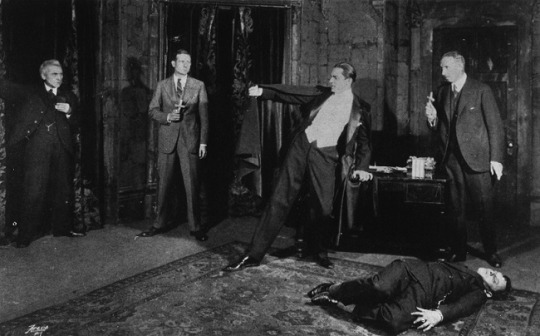
Bela Lugosi, of course would go on to star in the 1931 film adaptation. Other famous stage Draculas include Jeremy Brett and Frank Langella (Langella's revival would also give us this amazing Edward Gorey art:)

So we can see that the stage plays influenced many versions that would later come, as well as the idea of vampires in pop culture at large. It’s interesting how the motifs and themes we expect when we hear the word “Dracula” were actually the creation of people besides the author, and these differences don't seem to have been majorly disputed in the last 100 years. Has this happened with other classic novels? I'm not sure, but I'd love to see an accurate adaptation of Dracula in stage or film form, and see how it might influence filmmakers and directors for the future.
281 notes
·
View notes
Text
Dancers attending P21 Intensive
??
Olivia Elise Victoria Nikolovva
AM Dance
Aurora Monroe
Ale Mancillas Dance Studio
Balbina Cueva
Allegro Performing Arts Academy
Arina Bryzgunova Bella Verbera-Hernandez
Aspirations Dance Company
Lola Nelms
Avanti Dance Company
Hayden Goren Eva Graziano Mia Menji Kaylee Randeniya Rosie Zahoul Sans Blair Tennant
Capitol Dance Company
Malia ?
Center Stage Performing Arts
Tommie Milazzo
Club Dance Studio
Brooklyn Besch Emma Kleve Claire Pistor
Dance Alliance of Camarillo
Shiloh Lark Farrah ?
Dance Dimensions Performic Arts Center
Victoria Safahi Serena Wilcox
DanceDynamicsLV
Lyla Haider
Dance Collective DC
Janelle Liu
Dance Edge Studios
Antonia Zanin
Dance Magic Performic Company
Savannah Lee
Dance Makers of Atlanta
Nola Paulina
Danceology
Ella Bustillos Hudson Hensley Ella Nani Knight Ella Koehnen Soleil Lynch Aria McCrea Cheyenne Ringerman Sydney Swinehart
Dance Republic
Graisyn Clare
Dansé Escuela de Danza
Alexa Ahumada Marielisa Portillo Isabella Trabucco
DC Dance Factory
Pay Lynch
Dolce Dance Studio
Brixtyn Cappo
École de dance Louise
Léonie Macorig
Edge Studios
Sienna ? Aria Giusti
Encore ELite
Leona Zariel
Epic Motion Dance Studio
Maria Sofia Rodríguez Mia Sofia Covarrubias Tinoco
Essence of Dance
Ava Killam Makena Killam Briar ?
Eternal Dance Company
Maddie Kronenberg
Evoke Dance Movement
Emmy Claire
Evolution Dance
Scarlett O'Neil
Evolve Dance Center
Maria Belen Salido
Evolve Dance Centre
Izabella Modarresi
Excel Performing Arts
Emma Sheff
Fusion Dance Omaha
Gigi Murray
Glass House Dance
Eden Cui
Groove Studios WA
Kaiden Koths Abby Mae
Hart Academy of Dance
Lydon Thach
Havilah Dance Company
Caitlyn Marie Malea Jade Moore
Inferno Dance Co
Maizie Smith
Instyle Dance Company
Jacilynn Mar
Janet Dunstans Dance Academy
Adeline Glenn
K2 Studios
Neriah Karmann Lennon Reign Jessica Sutton
Larkin Dance Studio
Matinly Conrad Palmer Petier
Legacy Dance Productions
Sophie Boonstra Paisley Clarke
Legacy Studio of Performing Arts
Brynne Smith
McKinley School of Dance
Teodora Narancic
Murrieta Dance Project
Khloe Cabrera Gracie Gilroy
N10 Dance Studio
Claire Avonne Kingston Madison Ng
No Limits Dance Academy
Ayanna Voulgaris
Nor Cal Dance Arts
Aria Davi Aubrey Paz Olyvia Reza
North Calgary Dance Centre
Ellie Blakley Georgia Blakley
OCPAA
Libby Haye
Onstage Dance Center - Los Alamitos
Adalyn Nicole
Pave San Diego
Eleanor Bullock Aryanna La Fontaine Cooper
Pave School of the Arts
Sofia Cuevas Stella Fisk Livi Matson
Perception Dance
Mabel James
Project 21
Ellie Anbarden Olivia Armstrong Lilly Barajas Sienna Carlston Kami Couch Katie Couch Kenzie Couch Airi Dela Cruz Stella Eberts Gracyn French Regan Gerena Richie Granese Mady Kim Brooklyn Ladia Leilani Lawlor Chloe Mirabel Savanna Musman Madelyn Nasu Avery Reyes Berkeley Scifres Bristyn Scifres Sara Von Rotz Leighton Werner
Project 520 Dance Studio
Adelynn ? Karli Heim Sasha Muratalieva
Queen City Dance
Annabel Speck
Seattle Storm Dance Troupe
Claire Clark
Shooting Stars Dance Studio
Karsyn Hernandez Malani Maliya
Stars Dance Studio
Hannah Burak Catherine Clayton Fabiana Pierleoni Elie Rabin
Starstruck Performing Arts Center KS
Kinley Winn
Steps Dance Center
Emmie Pitt
Studio Fusion
Harley Gross Juliet Anne Wydo
The Collaborative
Addison Cullather
The Company Space
Piper Perusse Stella Marcordes Vivian Marcordes
TheCREW
Isabella Tamayo
The Dance Collective DC
Eva Rogachevsky Quincy Thomas
The Dance Collective MD
Lyla Urban
The Dance Company of Los Gatos
Scarlett Blu Chloe Rose
The Vision Dance Alliance
Emily Polis
Utah Ballet Festival
Ruby Taylor
West Coast Dance Complex
Mila Barnett
Xtreme Dance Studio
Jocelyn Longroy
YYC Dance Project
Kinsley Oykhman
23 notes
·
View notes
Text
Silly rambling about my own writing worlds.
Ohhh, you know im doing better when i am acctauly working on one of my worlds.
Accustomed Fear was a world I made up and help me with homeless as a child to teen to adult.
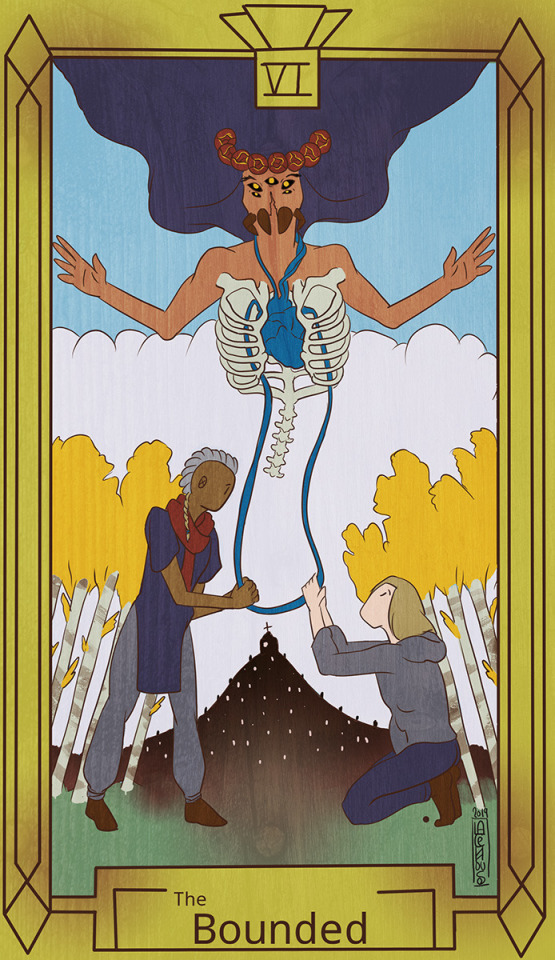
Baltu are my people, a tribe of semi nomadic humans.
god the :witch: aka Red and Quincy are my OTP


Sadie is god's Shade.



Crypt Queen is a creature made to be a shock troup
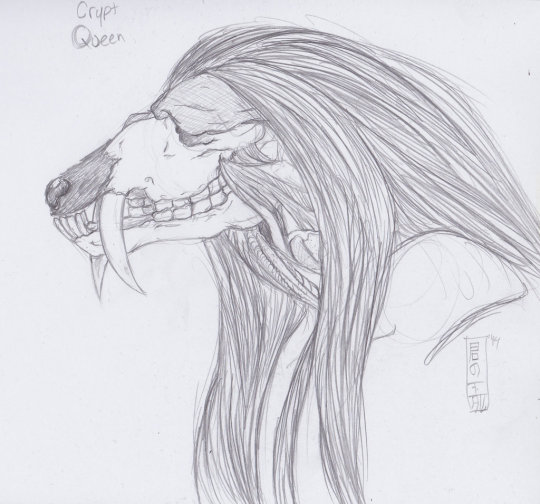
Sahir and Hes Human Names Escapes Me who are both in the undercity.
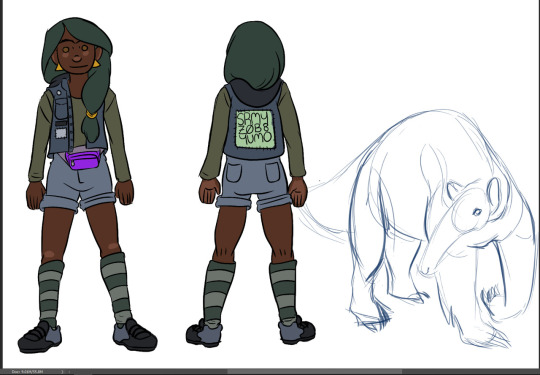
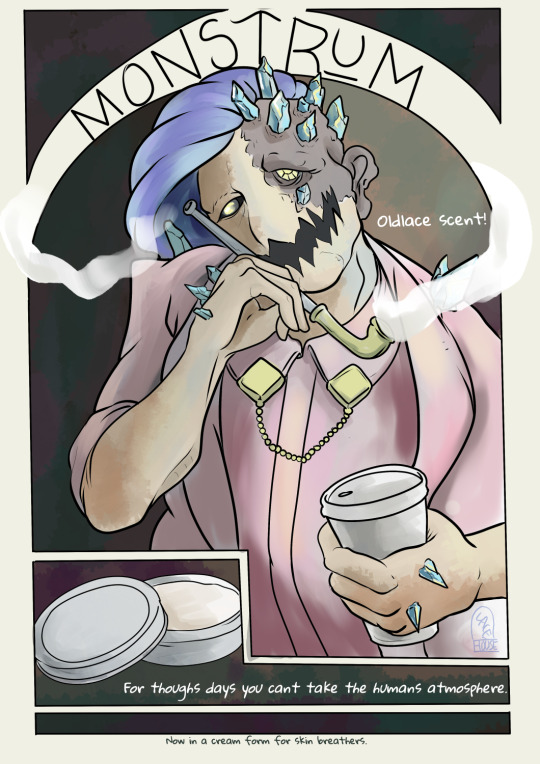
And the most recent thing ive work on it is this new art of Lace,

I just need to actively go back to work on this world.
4 notes
·
View notes
Text
Starting to get back in my bleach era ✌️
(AKA being completely obsessed & down bad for Toshiro Hitsugaya's adult form & for Byakuya Kuchiki)
Speaking of, why does no one ever write for a quincy!reader/oc for Toshiro? Especially in the TYBW, where he turns into his adult form. You cannot tell me that a person with good sense, even if an enemy & a quincy, will not thirst and stare at his fine ahh when he looks like that.
Yall are missing out on a very funny & delicious enemies to reluctant allies to friends to lovers troupe with them. Especially since it draws some parallel to Toshiro & Isshin (the soul reapers) and reader & Masaki (the Quincy ladies).
#Bleach#toshiro hitsugaya#byakuya kuchiki#toshiro hitsugaya x reader#byakuya kuchiki x reader#bleach tybw
27 notes
·
View notes
Text
LOUIE'S BOOK RECOMMENDATIONS
Autobiography by Miles Davis and Quincy Troupe
A page-turning autobiography of the legend of jazz, Miles Davis. Anyone who is familiar with Miles will see how well this book delivers his distinctive voice and style. I loved this particularly for how in-depth Miles goes about his relationships with other jazz musicians who I love and always find myself wanting to know more about, especially from a perspective as unique as his. It also serves as a vivid and stark portrait of a deeply racist America from a Black musician who refused to compromise.

A People’s History of the World by Chris Harman
A tome written by genius Marxist historian Chris Harman that attempts to detail all of human history through the lens of class struggle. Harman starts at prehistory, analysing Marx and Engels’ concept of ‘primitive communism’ which posits that human history wasn’t always marked by class oppression and brutality. Through much of early human history, Harman argues, you can find classless hunter-gatherer societies free of sexism, racism and other forms of oppression. He details the rise of class oppression from slave societies (like Rome) to feudalism and into our current predicament of capitalism. A People’s History is inspiring, showing that there has not always been oppression and hatred, and that since oppression has become a norm there has always everywhere been deep resistance to it and a yearning for a better world.
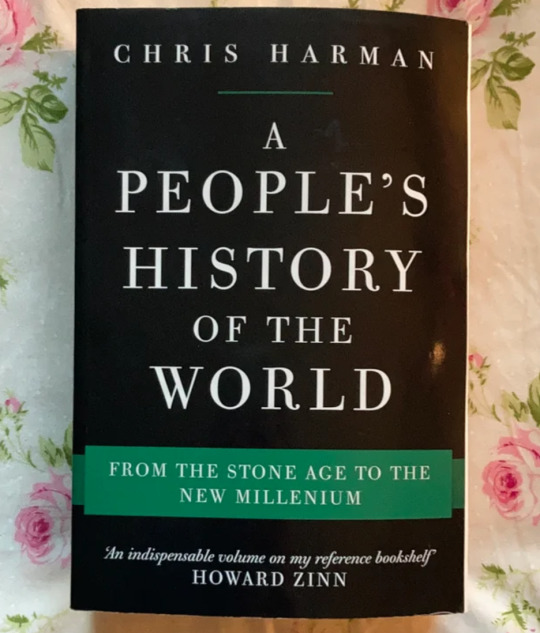
2 notes
·
View notes
Text
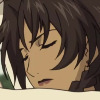
MUSIC AS REBELLION
Noah's music, in short, is her way of making sure history isn't obscured or changed by those who would twist the story and place the blame on innocents, her act of rebellion against Yhwach. In most places like the Wandenreich who are ruled by someone like Yhwach, music is indeed seen as a way to make the common man think. It can tap into your emotions in ways no one knows, it can make you think...it can open your eyes.
Music plays a decisive role in dictatorships. Like no other art, it appeals to people’s emotions without detours via the intellect, which totalitarian regimes like to undermine. Music, as everyone knows, can overwhelm, and ruling powers have exploited this potential at all times. In dictatorships, this usually happened in a planned manner and on a large scale. Music policy in almost all regimes shows certain similarities. One of its basic features is that it distinguishes between desired music (music that benefits the regime) and undesired music (music that does not benefit or even harms the regime) and acts in two directions: Desirable music and its composers are strongly promoted, while undesirable music and its composers are marginalized, suppressed or made to conform. (X)
Noah's music is no different seeing as how her & the troupe's songs are well known throughout quincy history- try as the wandenreich may but these songs will never die. Noah's been writing songs since she was a CHILD, her most popular one (A message about what happened 1000 years ago to her home) is seen as a POWERFUL rebellion anthem- it makes people think, it's not a sob story. The words used, the way it's sung- the way it can be used to rally those together no matter the side against an enemy...
It's such a powerful weapon that no one can silence it, even if she somehow lost the ability to speak, they'd still live on. It's a slap to the face for the quincy empire hiding in the shadows of their enemy, and Noah knows it. Her music while an act of rebellion is also a suicide act once she's within those walls, it could get her killed but it doesn't stop her from continuing what she loves and believes in. Besides it has to be a fragile empire of one group can gift hope through their art to those who wish to see the freedom of their people and incite rebellion.
Music is still a powerful weapon in it's own right as it is, but to have it reach not just the people you know as a species, but an entirely different race alone and have it spark hope for them as well.
#* {Headcanons}#Noah vc: KNOCK KNOCK YOUR MAJESTY I'M COMIN FOR YA AND I'M GONNA HAUNT YOUR GRANDMASTER.#Alexa play the lucy gray discography //SHOT#anyway braincells died a bit but here fellas enjoy
4 notes
·
View notes
Text
"Lucciole sonore"

La bellezza delle voci jazz e blues,
il sincopare di sillabe fluide
la forma libera nell’improvvisare frasi
scorrono, abbracciano, metafore brillanti
occhi nel buio sono parole che imitano
lucciole pulsanti chiarore in un cielo nero
sono gli occhi chiari di una pantera nera furtiva
che all’improvviso come torcia emette luce
sotto i raggi di luna sonda luoghi nascosti
isolati misteriosi da qualche parte
dentro una campagna vibrante vita.
(Quincy Troupe)
8 notes
·
View notes
Text
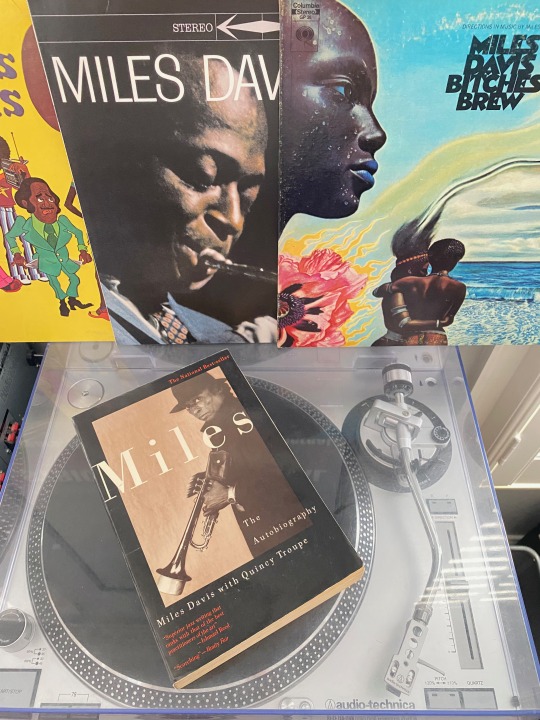
Miles Davis (w/ Quincy Troupe): Miles: The Autobiography (1989)
I read Miles Davis' autobiography too early ...
Much too early (the mid '90s, to be precise) in my tentative musical explorations beyond rock to fully appreciate the range of his musical endeavors and cultural impact, but I was keen to revisit it to mark the start of Black History Month.
Driven by a natural-born confidence, doggedness, even arrogance, to an affluent family (his father was a dentist), just north of St. Louis, Miles ascended to a protagonist's role in jazz history not long after moving to New York to study at Juilliard.
And though he was soon rubbing shoulders with many of the elder greats -- Dizzy, Bird (Miles' reminisces about him alone are worth the price of admission), etc. -- the restless, abrasive young trumpeter wasn't satisfied until he was assembling his own groups (one of his strongest suits) and leading sessions by his mid-twenties.
Not even a nasty heroin addiction was ultimately any match for Miles' indomitable will (after struggling for several years, he kicked it cold turkey at his family's farmhouse through "sheer meanness"), and little else would slow him down thereafter.
Moving through the '50s, '60s, and into the early '70s, Miles put his genius, intensity, and charisma toward pioneering a succession of styles (cool jazz, hard bop, modal, fusion, etc.), while employing and mentoring an unmatched number of musicians: John Coltrane, Paul Chambers, Gil Evans, Wayne Shorter, Tony Williams, Herbie Hancock, John McLaughlin, etc., etc., etc.
A toxic blend of drugs, alcohol, and decadence forced Miles into semi-retirement in the late '70s, but he resumed sporadic recording, performing, and innovating in the '80s until his death in 1991, aged 65, and his influence obviously still looms large.
But beyond recounting an epic life story, co-author Quincy Troupe's biggest coup was capturing Miles' voice in all of its conflicting, often profane wisdom, pettiness, rancor, and occasional frailty, thereby addressing Davis' many human flaws (perhaps chief among them his poor treatment of women) as well as his achievements.
To echo critic Roy Lotz, "I picked up this book feeling curious, and put it down nearly obsessed with Miles," so as I delved into jazz after in the years that followed, I purchased as many Miles Davis records as I did of every other titan of the genre combined.
I suppose there are worse ways to wade into jazz's vast ocean ...
Featured Records:
Miles Davis: Bitches Brew (1970)
Miles Davis: Kind of Blue (1959)
Miles Davis: On the Corner (1972)
Buy from: Amazon
#Miles Davis#jazz#dizzy gillespie#charlie parker#thelonious monk#cool jazz#hard bop#modal jazz#jazz fusion#herbie hancock#john coltrane#vinyl#paul chambers#gil evans#wayne shorter#tony williams#john mclaughlin#black history month
2 notes
·
View notes
Text

Poet, playwright, activist, educator, and essayist June Jordan was born in Harlem, New York City, in 1936. An only child, she was raised by her Jamaican immigrant parents in Brooklyn’s Bedford-Stuyvesant neighborhood. She began writing poetry at only seven years old. Jordan attended high school at the Northfield School for Girls in Massachusetts and university at Barnard College, which she left without a final degree due to her alienation from the strictly white and male literary curriculum there. She married and later divorced Columbia student Michael Meyer, with whom she had one child. Despite anti-LGTBQ+ stigma at the time, Jordan’s writing openly acknowledged her bisexuality.
The author of 27 books—including essay collections, libretti, and children’s books as well as volumes of poetry—Jordan was also a lifelong activist who fought fiercely for civil rights, women’s rights, LGBTQ+ rights, and anti-war causes. She taught at CUNY’s City College, Yale University, Sarah Lawrence College, and SUNY Stony Brook before being appointed professor of African-American Studies at the University of California, Berkeley, where she founded Poetry for the People. Jordan’s many accolades include grants and awards from the Rockefeller Foundation, the National Endowment for the Arts, PEN America, the National Association of Black Journalists, and numerous other institutions. She died of breast cancer in 2002. A widely influential poet who worked in accessible language to convey deep truths around identity, Jordan is celebrated today for both her literary writing and her dedicated advocacy for social justice and historically excluded groups.
Why are you posting this @alivesoul?
Because June Jordan taught a class at the University of California Berkeley called Poetry for the People and that class has been permanently cancelled. A shame. Teacher/Poets are essential to any higher learning experience as poetry informs us in every way of the world around us. I can't imagine my college experience without the poetry of Nikki Giovanni, Quincy Troupe and so many others. Beyond that, June is a truth hunter, a truth gatherer, and a truth provider---a modern day griot. I truly hope she finds a safe space within the diaspora to continue her work as she represents the very best of what it means to be Black in this country. The attack on Black intellectuals from Ta-Nehisi Coates to Claudine Gay is truly one of the great academic and cultural crimes of my lifetime and cannot continue to go ignored. Never have I seen so many highly educated and accomplished black men and women so unfairly attacked and discredited. These men and women are literally trying to save the soul of country by shining a light on the FACTS of our history, present AND on those who would profit from lies, greed and violence. If there is one thing I would implore those who read this blog to do, it is to read, study and protect not only our history but those who make it their business to make sure it is never forgotten.
We are excellence.
Peace.
19 notes
·
View notes